Women's Dress to Girls' Skirt Refashion Tutorial
/Refashion a thrifted women’s dress into a girls’ maxi skirt! Step by step tutorial pictures to upcycle stretch fabric in a few simple steps.l
Read MoreRefashion a thrifted women’s dress into a girls’ maxi skirt! Step by step tutorial pictures to upcycle stretch fabric in a few simple steps.l
Read More
My great-grandmother, Caroline, was Bohemian; so "boho" means a little something different to me because I think of her. I remember her fierce hugs and the stories of her spunk and determination. Widowed, with three young children, she moved from the city to rural PA and married a bachelor farmer. I have always thought she was brave, and I wouldn't be here if she hadn't taken a chance. Characteristic of her generation, she was very resourceful. My baby quilt is pieced from flour sacks and her quilt templates were cut from old cereal boxes. One Christmas, we all got stuffed pigs made from polyester scraps. She also worked hard and never gave up. She had to quit school to help at home, but got her GED in her 80s because it was something that she had always wanted to do. I still remember her showing us the certificate hanging proudly in the frame on her living room wall. She made the best out of any situation with creativity and determination. That is a bit of what I tried to do this week. We had 2 feet of snow and 3 snow days, so I had to "make do" with what I had on hand, although it meant a lot more work. In the end, both outfits cost less than $5 to make and all that I had to purchase when I finally was able to leave the house was some thread, embroidery floss, and buttons.
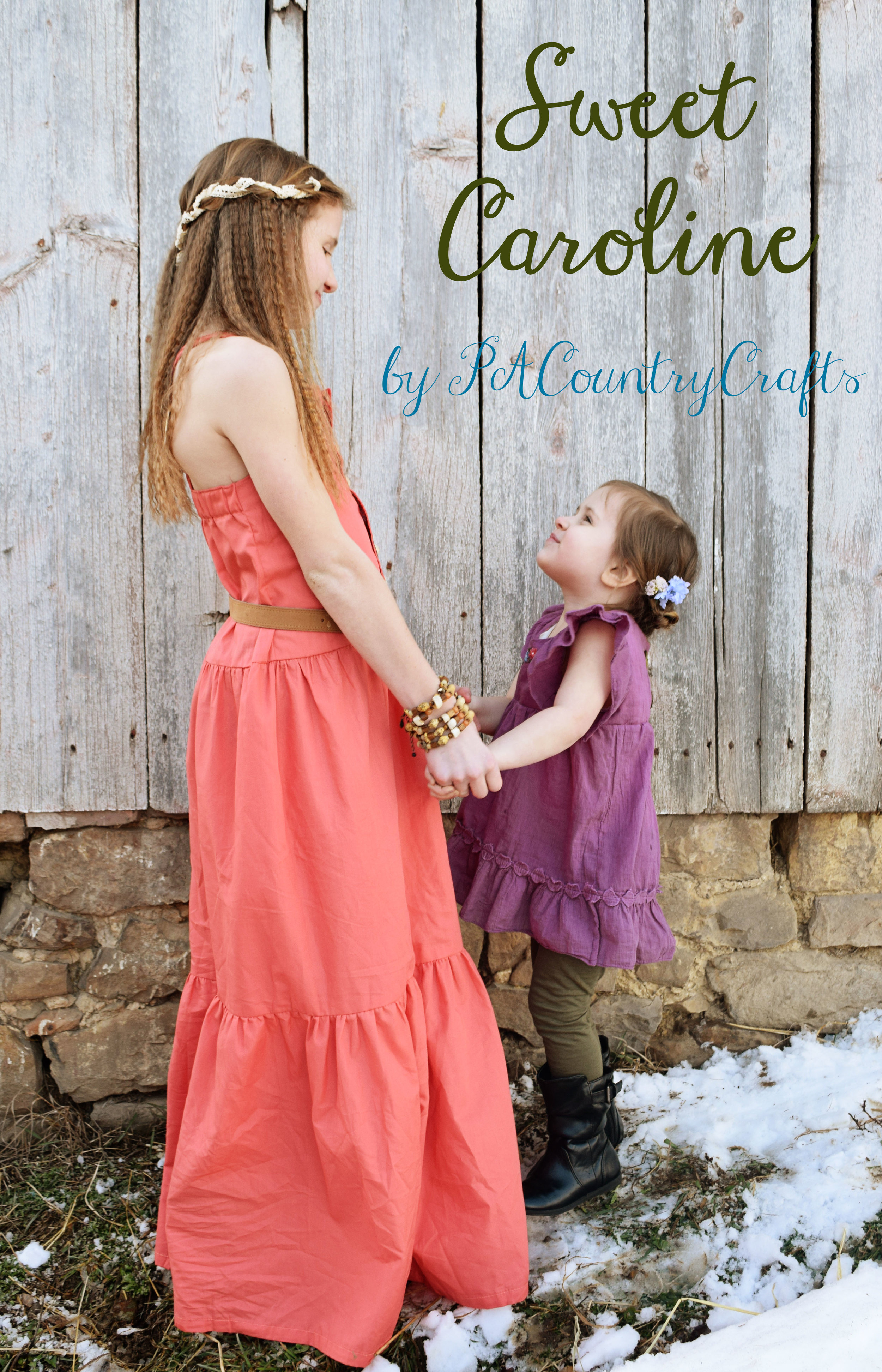
I still tried to incorporate the modern "boho" style in my designs. First, I made a tunic from an old shirt that was given to me. I loved the color (with a slightly uneven dye effect) and it was a thin, flowy fabric perfect for what I had in mind. I removed the bottom ruffle (the open part was badly torn) and the bottoms of the sleeves. Then, I carefully cut the rest of my pieces from what was left of the shirt. I drafted a bodice with a curved front and trimmed the front of the bottom skirt portion a bit to create a high-low effect. The original ruffle was resized and sewed onto the bottom of the tunic. I embroidered the neckline with some simple flowers and vines. It took awhile, but it was definitely worth it to add some lovely detail. The top is lined with remnants of a really soft sheet I used to line THIS dress and I understitched along the inside neckline. I reshaped the sleeves to create a loose, flutter sleeve with a bit of gathering at the top. Then, I sewed it to the bottom and added buttons on the back. I also made a pair of leggings from some olive green knit fabric that I found in a tote after digging a path to my storage shed.
Before...

After...

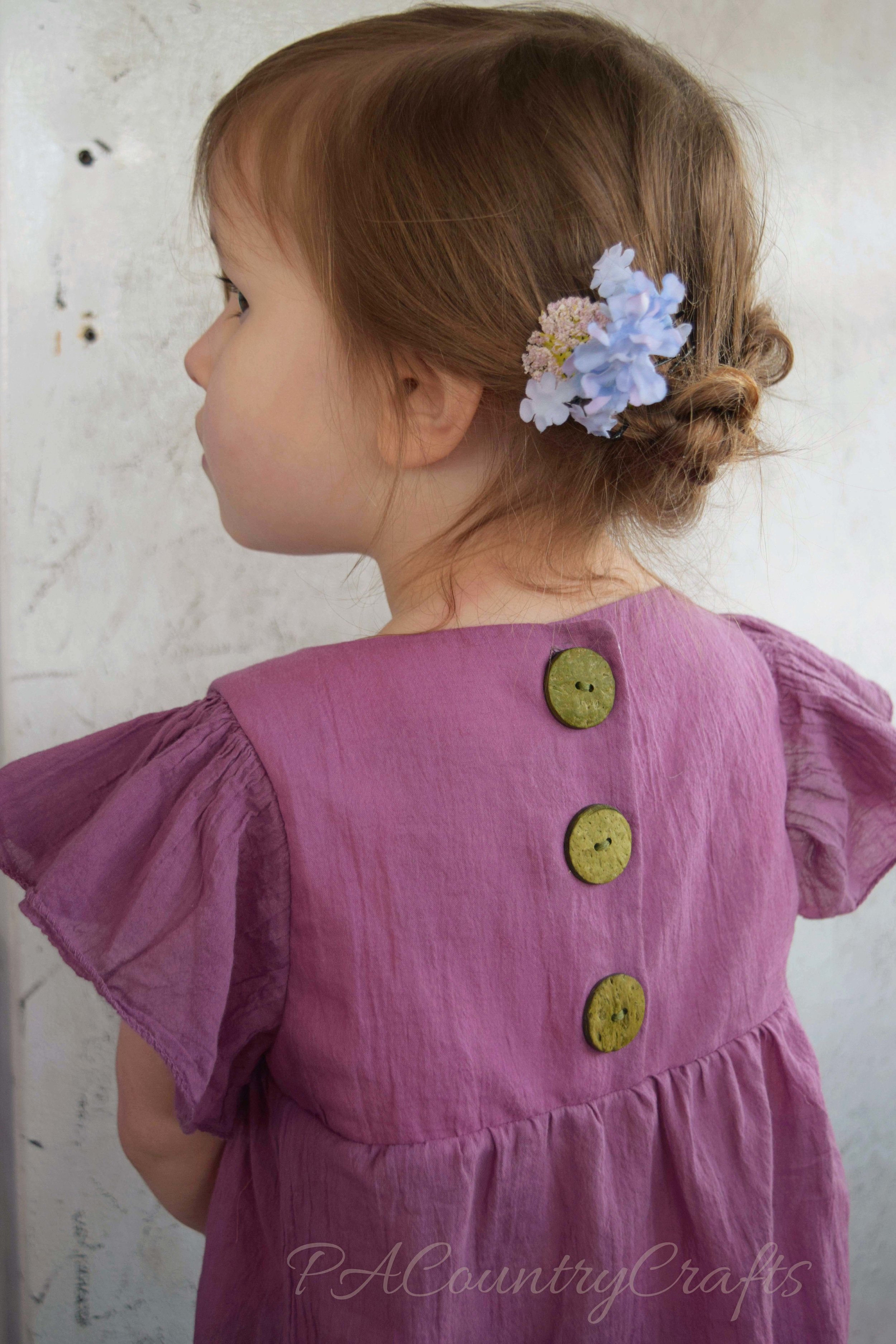

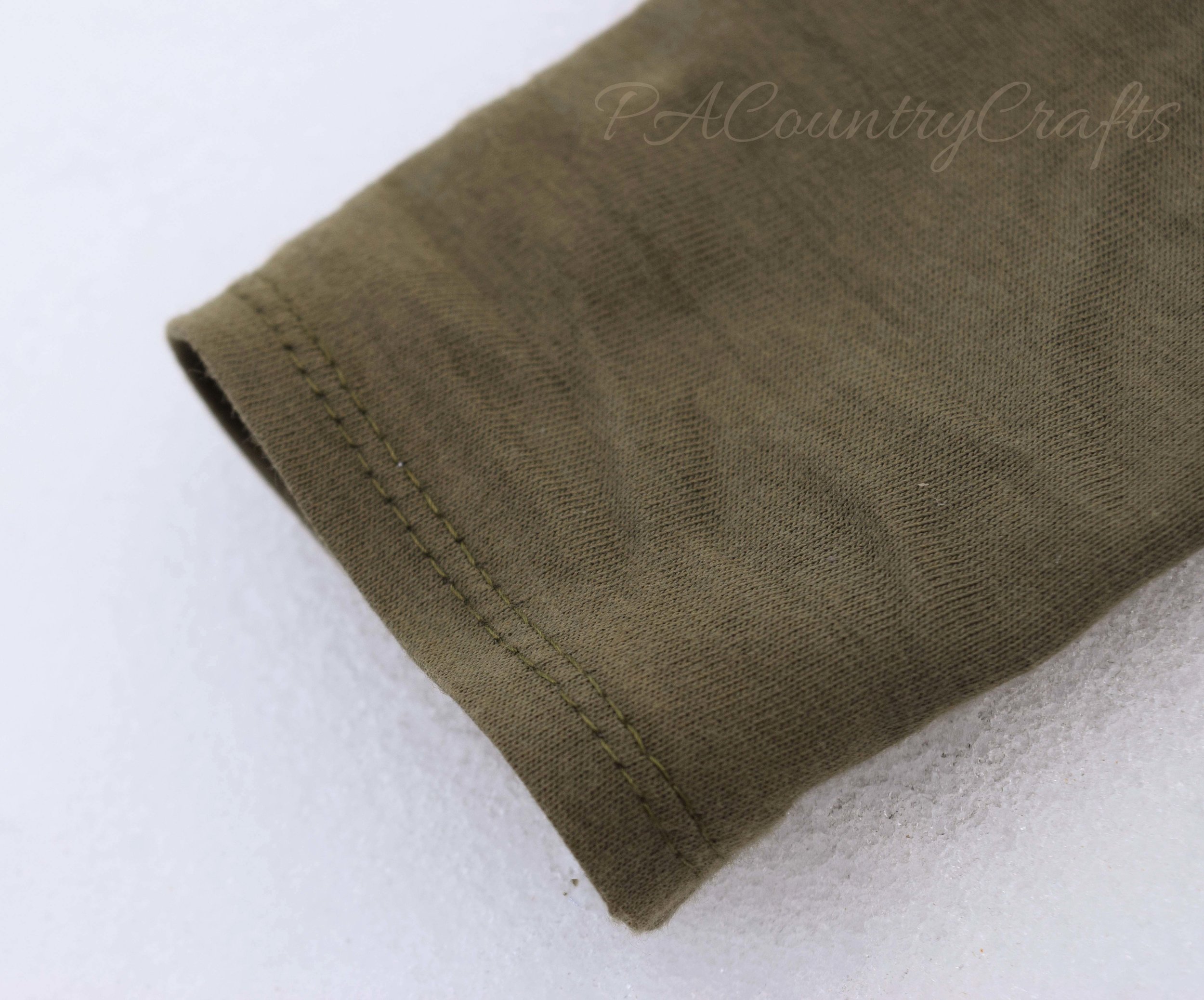



My other daughter wanted a maxi dress and I found a dusty coral sheet I had purchased years ago on clearance at Target and stuffed under my fabric table. I only used about half of the sheet to make this dress. I drafted the pattern to have a drop waist and long, gathered tiers. I was careful in my cutting and able to use the original sheet hem, too! Yay! This time, I put the buttons in the front and hand embroidered the button placket in the same intricate flowers and vines. Oh, and those buttons? My husband made them from a dowel rod! He sanded them on the belt sander to make them round and carefully sliced them off of the dowel. I sanded them by hand to smooth and even them out. After a last-minute trip for 1/16th inch drill bits, he drilled holes in them for me. The straps are made from braided strips folded like bias tape and sewn together. They cross in the back and I added an elastic casing so that it would fit well and not gap in the back.
Some more before pictures...
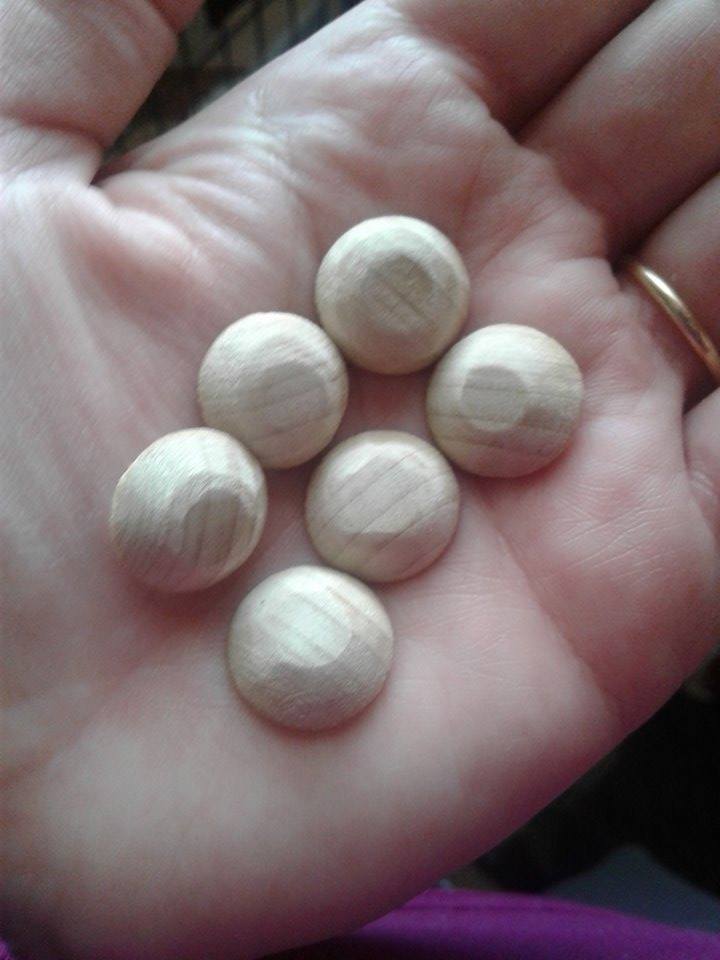

After...
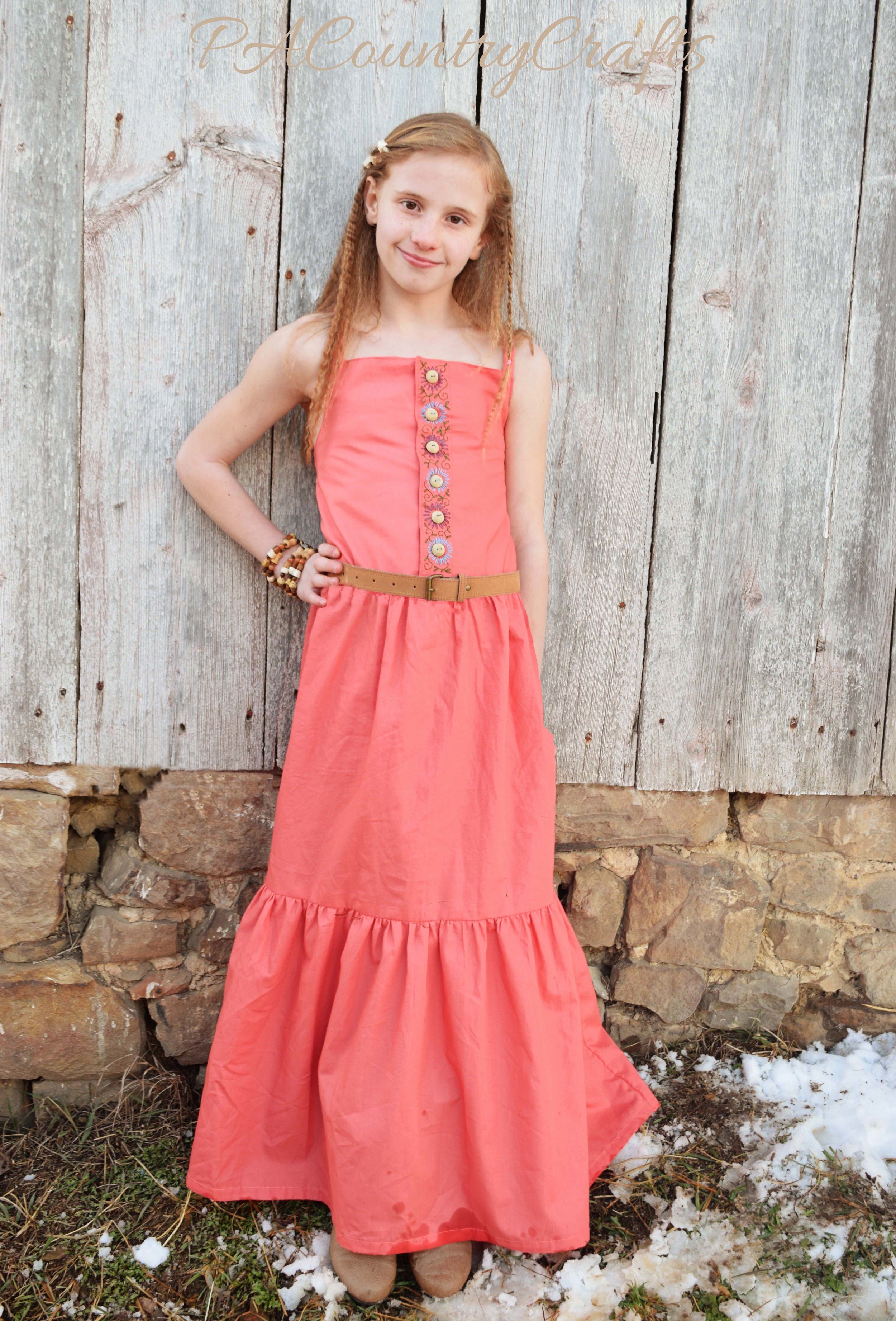

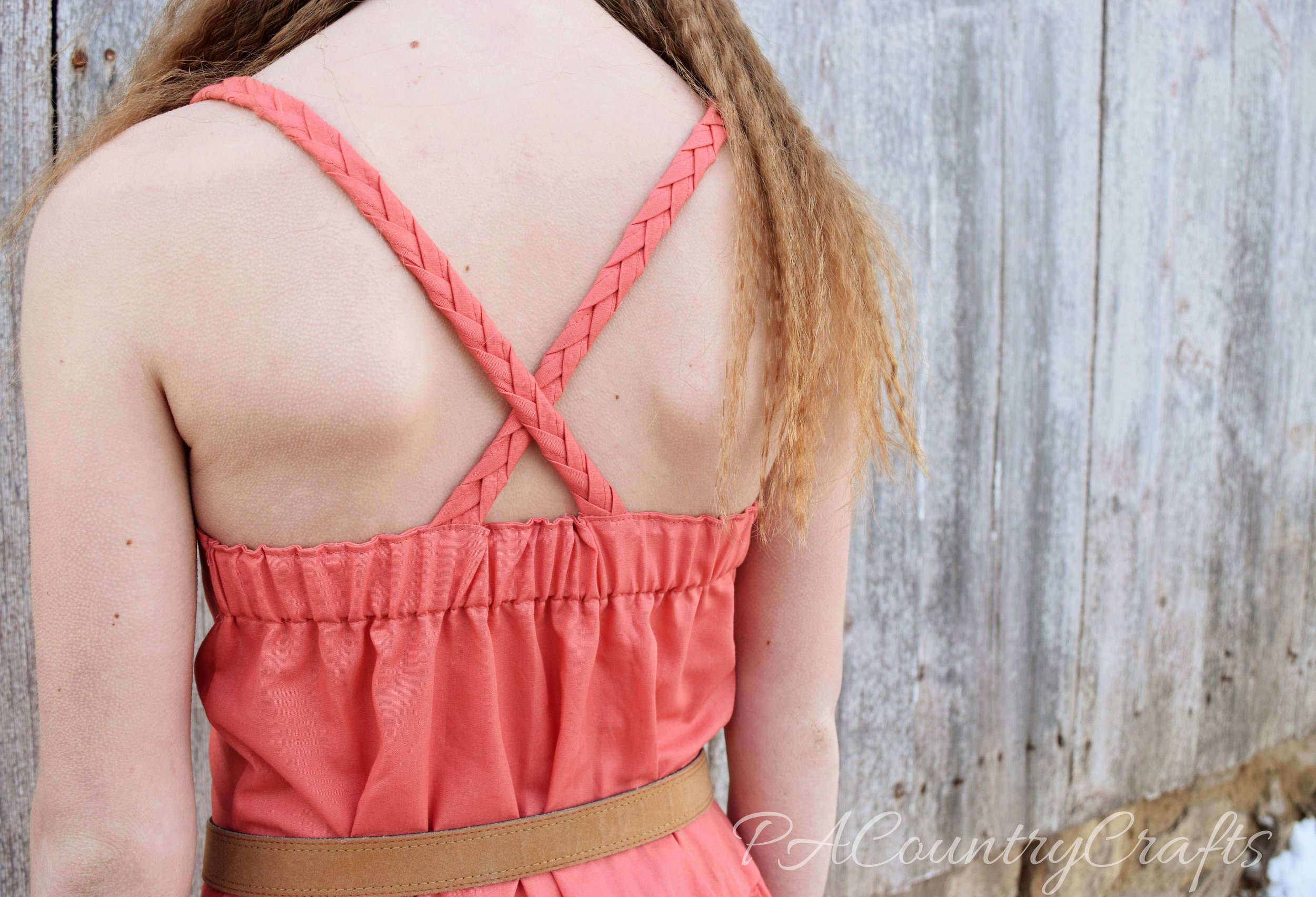

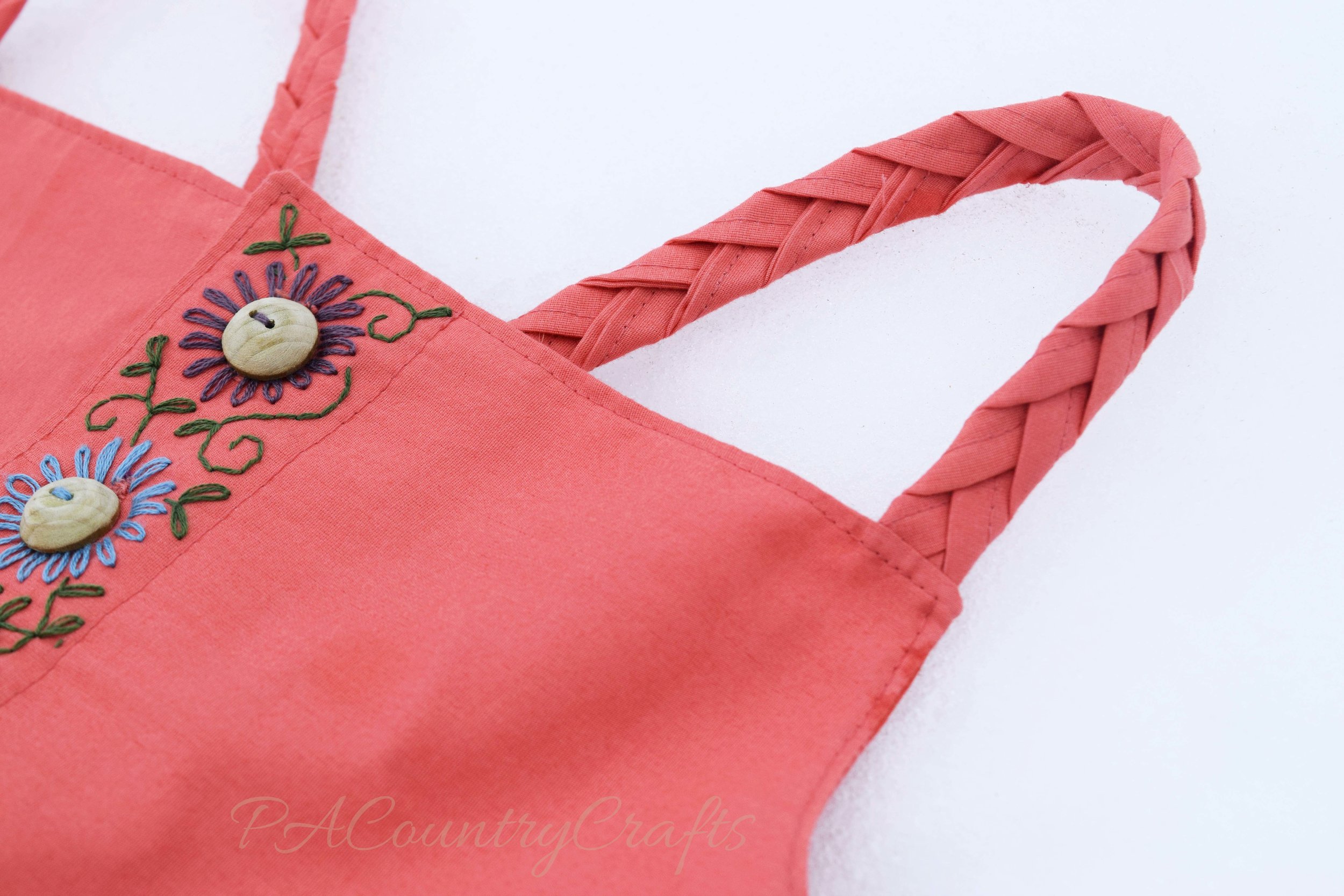
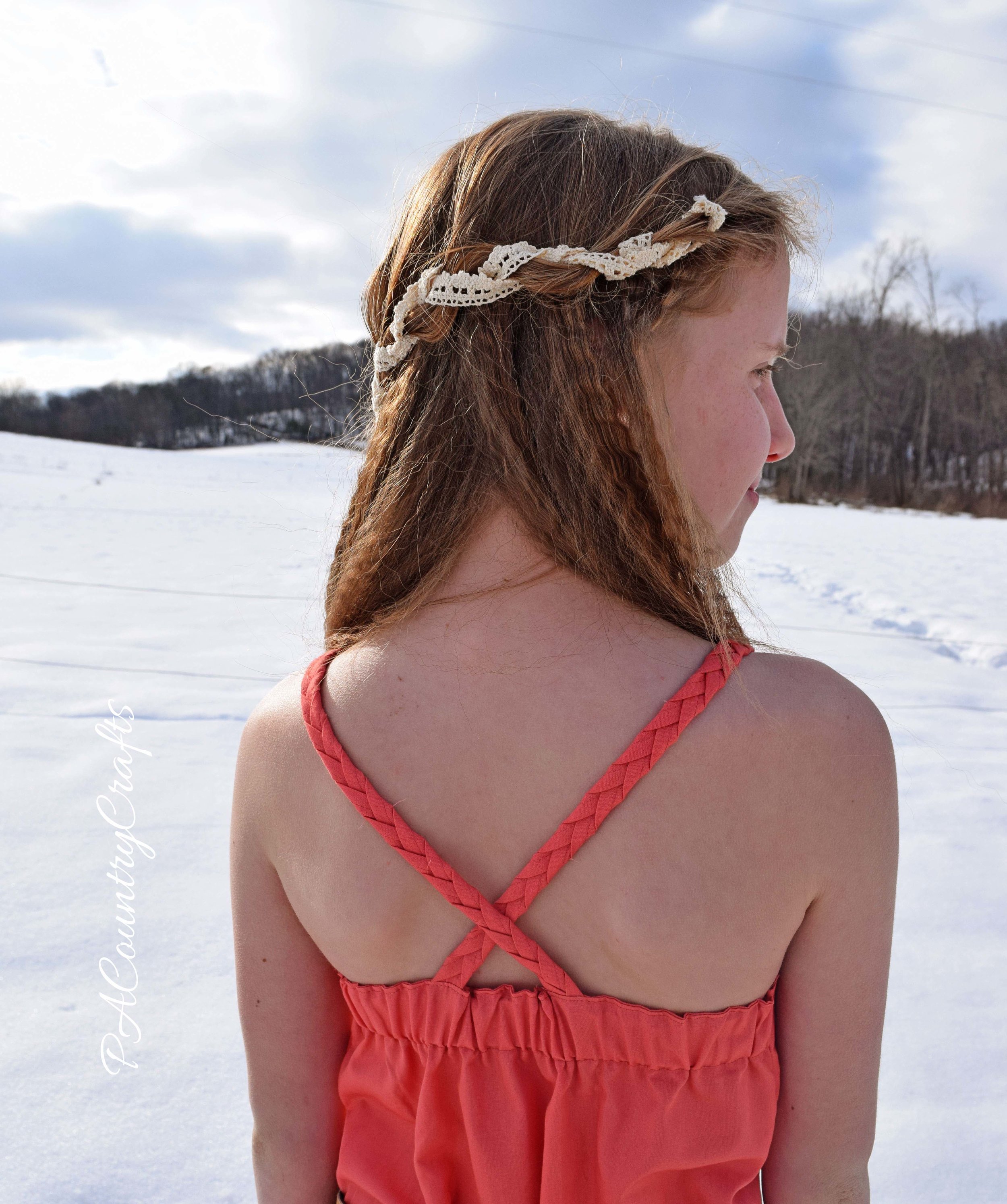

We tried to do a farm themed photo shoot, but it is hard because our options right now are: a) snow or b) mud. At the end, I decided to try to take some pictures with our new chicks, but it was clearly a bad idea. Let's just say that this was the second week in a row that an outfit had to be washed right after the pictures. Ew!!!


You can vote for your favorite "boho" look HERE over at Project Run and Play!
Thank you again to all of those who have voted and shared and supported me!!! Thank you to Aunt Karen for the purple shirt. A very special thank you to my sisters this week! Loni, you did an awesome job as my hairstylist and ironer. (Also, thank you for returning my vintage crimping iron.) Thank you to my husband for those awesome buttons and for carrying girls over the mud for pictures! Thank you most of all to my grandmother and other family members who pass down stories and leave a legacy to inspire future generations.

Make these simple white skirts dyed with an ombre effect for a more subtle patriotic look to wear to July 4th picnics!
Read More
I know there are peasant dress tutorials galore, but I am going to show you how to make these dresses using a few tips and tricks we have picked up over the past few years while making hundreds of these dresses for groups like Project Yesu. I already covered the "system" we use for cutting them out quickly and efficiently. Today I am showing you how to sew them together.

I mentioned yesterday that we will sometimes add a contrasting band to the bottom of the dress. It also makes a fun, color blocked effect. To do this just cut a strip the same width as the rest of the dress and the length needed to make it the desired size. Sew the strip to the bottom of the dress and serge or zig zag over the edge to keep it from fraying.


Gather all of your pieces. There should be 2 dress body pieces and 2 sleeves.

Line up the arm scythes of one sleeve and one dress piece with the right sides together.

Sew them together with a 3/8" seam allowance, back-stitching a little at the beginning and end. DON'T stop and pull it away from the machine. Leave your presser foot down. We are going to do a little chain piecing here. It is faster and makes fewer thread snibbles that scatter all over the place.
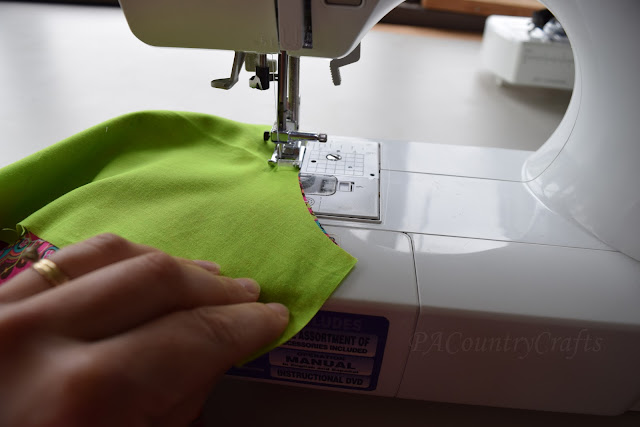
Just grab the other dress piece and sew it to the other side of the sleeve you just sewed.

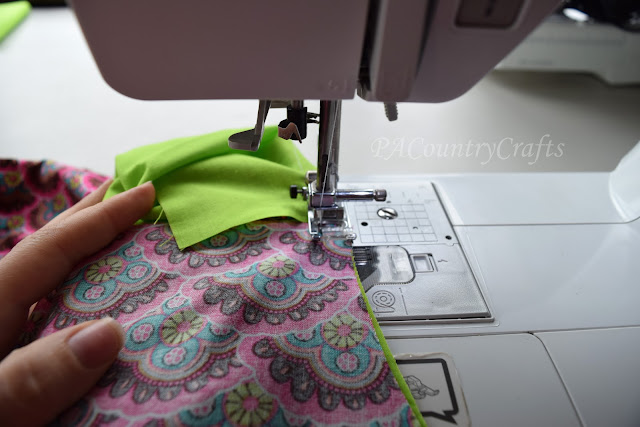
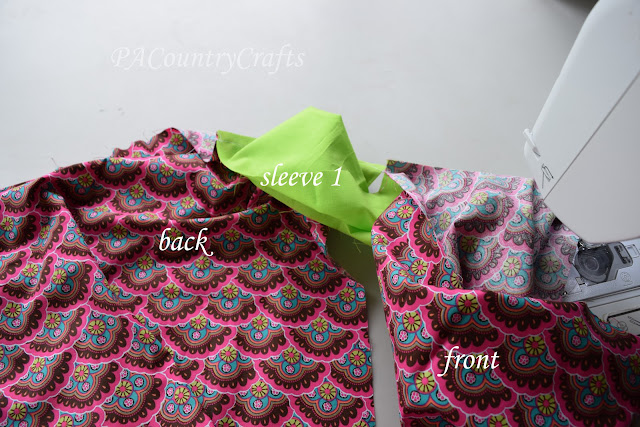
Then sew the second sleeve to the other side of the dress piece you just sewed. (No picture. Musta' missed that.)
Finally, sew the second sleeve to the first dress piece you started with.
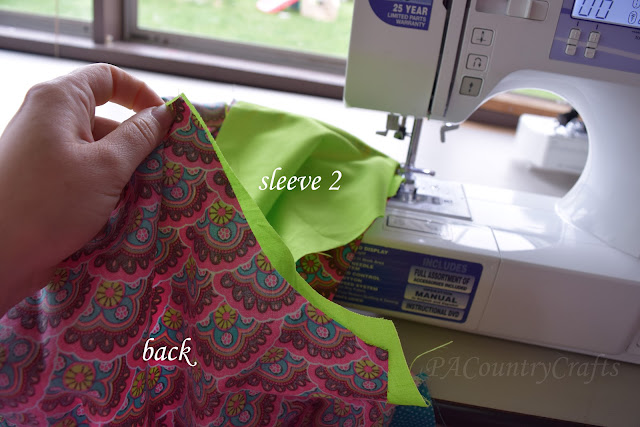
It is all kind of a circular thing. It is easy once you get used to it.
NOW you can remove it from the sewing machine and snip all the connecting threads.
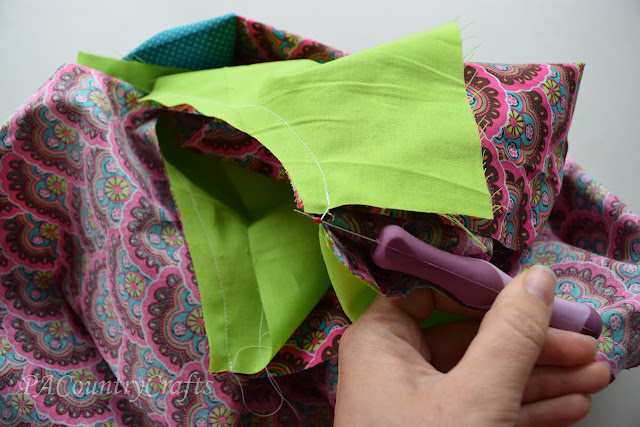
This is what it looks like now.

Next you are going to sew the sides. Grab the corners of the sleeves and make sure the armpits line up.

You need to press the seams in opposite directions with the top one going towards the sewing machine and the bottom one pointing towards you.


I know it is shifted a little bit, but I am trying to show the seams.
Use a 3/8" seam allowance. You may need to pivot a little bit at the armpit because the angle changes there.
Next, the raw edges need to be finished. I use a serger or overlock machine. It goes so fast and does a really nice job. There is really only one trick to it. You see, when you get to the armpit it naturally bends a little.

Just go ahead and pull that straight as you are sewing. The overlock machine produces a stretch stitch, so it will be fine. If you don't straighten it and try to pivot it, chances are the cutter will leave knicks in the armpit.


Now, it needs an elastic casing for the neckline. I have found that the easiest way to do this is to fold it under 1/4"...
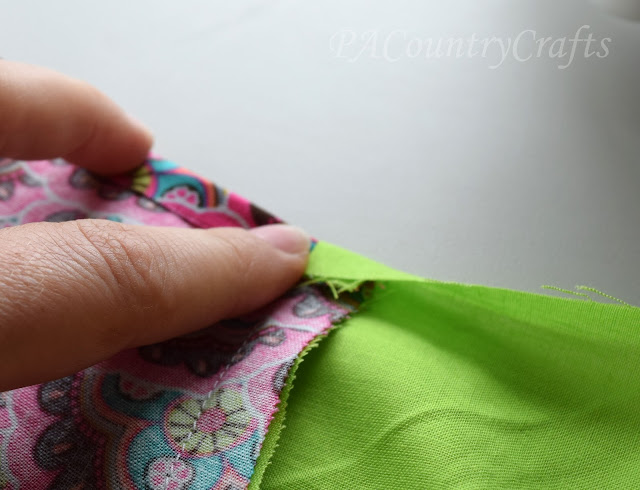
...and again about 1/2"...

...and just keep folding it as you sew. I like to use my presser foot as a guide. I keep my needle in the left position so the stitching is about 1/8" from the left edge of the fold. You need to leave room between the stitching and the right folded edge to insert 1/4" elastic so that gives it about 3/8".
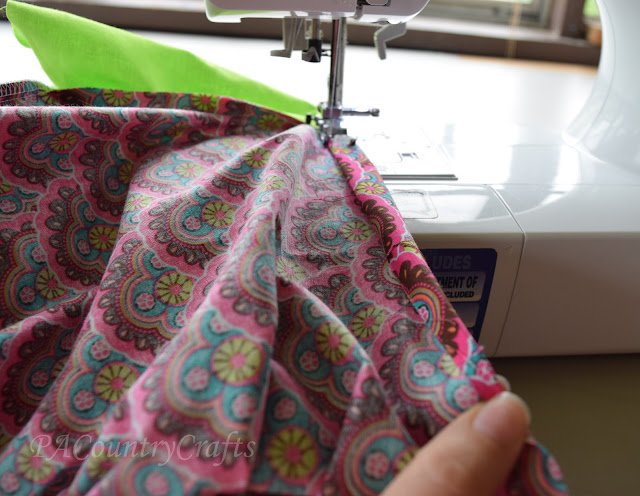
IMPORTANT!! Make sure that all of the seams get pushed in the same direction. I feed them towards me as I am sewing so that they go to the right. If you don't it is a pain in the behind to push elastic through there.
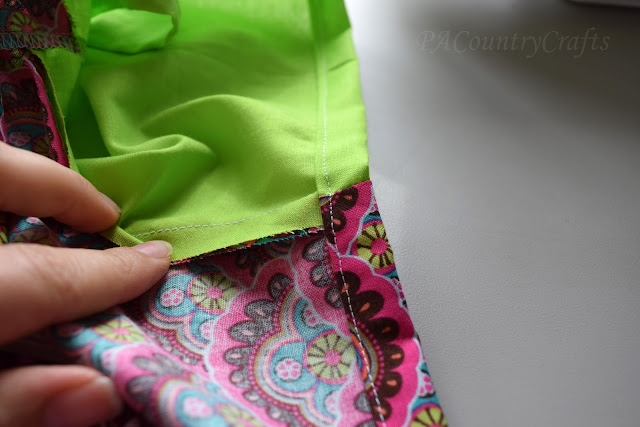
Also, leave an opening to thread the elastic through!
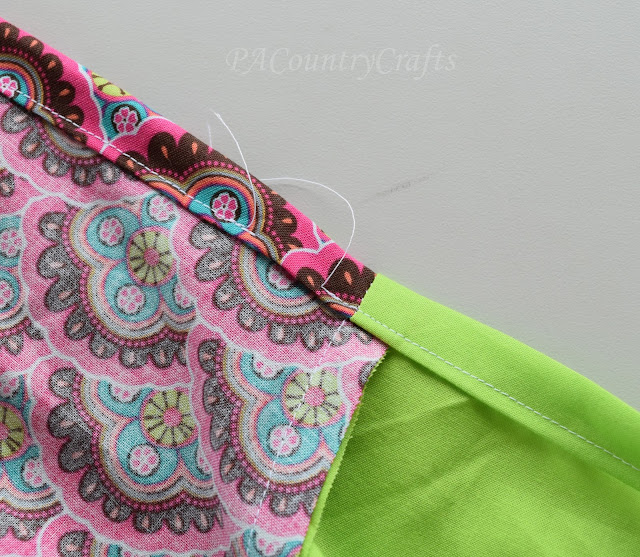
For the sleeves, you can leave them open and loose as we usually do, or you can make a casing just like the neckline on those and thread elastic. It is totally up to you. Here are some I did with elastic in the sleeves.

To hem the sleeves if not adding elastic, I just fold it under about 1/4" twice.

To hem the bottom, I fold it under about 1/2" twice.


I kind of wish I had topstitched where the two strips meet. I have done it that way before and it is a little nicer.
Last step! Put elastic into the casing at the neckline. We use 18" for the smaller dresses and 19" for the bigger ones.

Do yourself a favor and pin one end to the dress. It is so sad when the end of the elastic gets pulled into the casing. Put a pin on the other end and push it through the casing.

Now, I know there is a way to sew the elastic in while sewing the casing, but I thought it was a pain and we usually have helpers that are looking for non-sewing jobs to do.
Overlap the ends and use a zig zag stitch to hold them together.
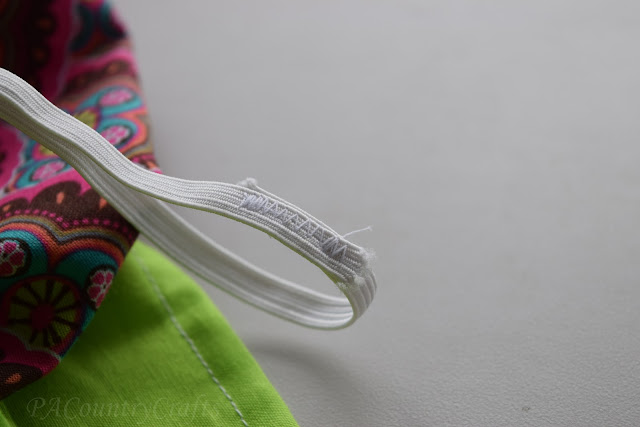
Sew the opening closed.

TA DA!
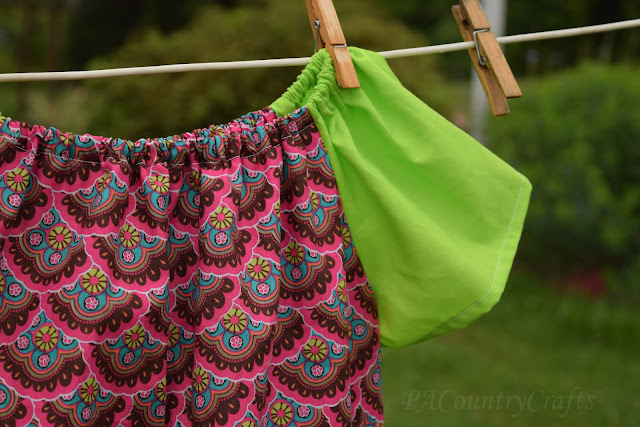
I can sew one of these together in about 15-20 minutes, so they really are fast to make.

This tutorial is for personal, non-commercial, or charity use only. It would be great if you could make one of these or a pillowcase dress for Project Yesu. If that isn't possible, please consider donating just $10 towards the costs of transporting these dresses to Uganda.

Yesterday I shared how we cut out peasant dresses quickly and efficiently, and I probably should have done this first, but I want to backtrack a bit and talk about how to choose fabric for these dresses.
First, a bit about fabric...
100% cotton works best. It is durable and will hold up to a lot of wear and tear.
We usually hit up Joann's red dot clearance sales when they have 50% off the clearance price. We also try to get a coupon for an extra 20% off when possible. Also, if you agree to take the end of the bolt they will give you the remnant price for an additional 50% off. I keep a tote in storage and we stock up throughout the year. We also accept donations of fabric.
It is important to make sure the fabric is good quality. I make sure that it is not too thin or too light. A good rule of thumb is that if you can see your hand through the fabric, it won't work. Please try to remember that often these girls do not have undergarments. Also, if the fabric is too light in color it will get dirty and stain faster. We try to choose bright, bold colors and prints as they seem to be very well received. Recently, I am also trying to remember that prints that contain words or animals might be confusing or offensive to other cultures.
The dresses require 1 to 1 1/4 yards. We often make contrasting sleeves. Also, if we don't have enough fabric for the full length, we sometimes add a contrasting band on the bottom. We usually use solids or small prints for the sleeves and accents.
Last thing: trims...
We often add lace or ric rac to the hem of the fabric. I am now trying to add the lace just above the hem so that it doesn't catch or get dirty as fast. It isn't always possible to attach it that way, though. It isn't necessary, but it makes a nice, little touch to make the dresses more special. We usually purchase the trims at thrift stores and yard sales.

Tutorial for a 1950s vintage style dress with a boatneck, scoop back, and twirly hi low skirt. It was made from a vintage sheet and trims.
Read MoreSewing, crafts, tutorials, recipes, and a little look at our life in the country - raising half a dozen children.
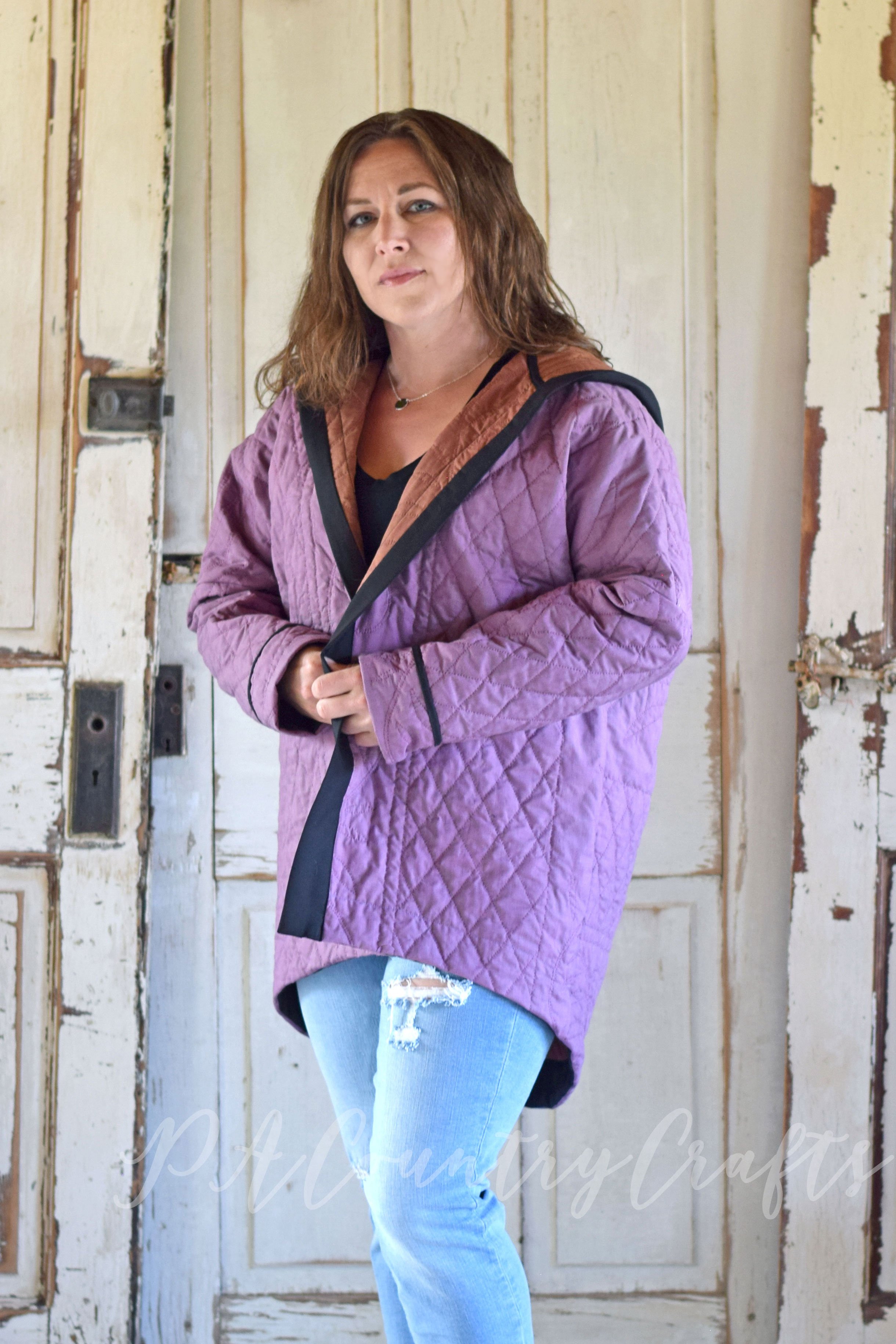
Hi! Thanks so much for stopping by! My name is Lindsay and on this blog you will find sewing, crafts, decorating, recipes, and tutorials with a little bit of honesty and encouragement.